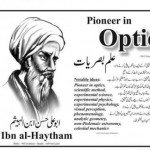- This topic has 7 replies, 5 voices, and was last updated 9 years, 5 months ago by
 Karan Ahuja.
Karan Ahuja.
-
AuthorPosts
-
-
April 8, 2016 at 3:02 am #36080
 Dr. Dhiman KakatiParticipant
Dr. Dhiman KakatiParticipantHello Everyone,
I want to simulate the RZ and NRZ pulse encoding for the same System, So I need your Suggestion Regarding what are the parameters we need to change while transforming from RZ to NRZ. I am using DQPSK with direct detection and 16 QAM modulation. Looking for your suggestion.Regards,
Dhiman -
April 8, 2016 at 11:03 am #36111
 Dr. Dhiman KakatiParticipant
Dr. Dhiman KakatiParticipantHello Everyone,
Still Looking for your Response. please have a response here as RZ and NRZ encoding are the mostly used encoding techniques. Your effort will be highly appreciated. Thanking you.Regards,
Dhiman -
May 3, 2016 at 7:21 pm #38802
 Ranjeet KumarParticipant
Ranjeet KumarParticipantHi Dhiman,
I think we doesn’t need to change different parameters while shifting from NRZ to RZ or vice-versa.
There is some difference between them.
You should use same parameters for both coding techniques.thanks,
-
May 3, 2016 at 7:23 pm #38803
 Rajguru M. MohanParticipant
Rajguru M. MohanParticipantHi dhiman,
I agree to the points of Ranjeet.
We should use same parameters value for both NRZ and RZ. -
May 4, 2016 at 1:27 am #38809
 umer ashraf waniParticipant
umer ashraf waniParticipantfirst analyze the spectrum of NRZ and RZ
-
May 5, 2016 at 2:49 am #38858
 Rajguru M. MohanParticipant
Rajguru M. MohanParticipantHi umer ashraf wani,
Would you help he to analyze the spectrum of NRZ and RZ.
How to get it.
Which parameters and results should we consider for this.Seeking your response,
Thanks, -
May 5, 2016 at 12:00 pm #38897
 Rajguru M. MohanParticipant
Rajguru M. MohanParticipantHi,
I am trying to compare between NRZ and RZ modulation formats.
Practically, it has been demonstrated numerically and experimentally that the conventional
nonreturn-to-zero (NRZ) modulation format is superior compared to the return-to-zero (RZ) modulation
when dealing with large WDM systems, as RZ modulation causes a significant Eye Closure Penalty near end channels.
The results obtained in this tutorial will be used to compare the Eye Closure Penalties for both NRZ and RZ cases,
as well as the effects of nonlinearities.
The advantage of RZ format in terms of transmission
distances was recently demonstrated in a long-distance wavelength
division multiplexing (WDM) transmission experiment though most WDM transmission experiments conducted
so far have used NRZ formats [6]. WDM signals, which were
initially NRZ but modified before transmission, were successfully
transmitted over transoceanic distances in a recirculating
loop. Time-division multiplexing (TDM) transmission experiments
, of course, use RZ signal formats, which allow
optical MUX-DEMUX to be easily carried out. The relative
advantages of NRZ or RZ formats are, however, still unclear
even in single-channel long-distance transmission.Thanks,
-
May 5, 2016 at 10:16 pm #38924
 Karan AhujaSpectator
Karan AhujaSpectatorHi Dhiman
I agree with Rajguru that Practically, it has been demonstrated numerically and experimentally that the conventional nonreturn-to-zero (NRZ) modulation format is superior compared to the return-to-zero (RZ) modulation when dealing with large WDM systems, as RZ modulation causes a significant Eye Closure Penalty near end channels. The results obtained in this tutorial will be used to compare the Eye Closure Penalties for both NRZ and RZ cases, as well as the effects of nonlinearities. The advantage of RZ format in terms of transmission distances was recently demonstrated in a long-distance wavelength division multiplexing (WDM) transmission experiment though most WDM transmission experiments conducted so far have used NRZ formats .
WDM signals, which were initially NRZ but modified before transmission, were successfully transmitted over transoceanic distances in a recirculating loop. Time-division multiplexing (TDM) transmission experiments, of course, use RZ signal formats, which allow optical MUX-DEMUX to be easily carried out.
Hope you find it helpful.
Regards
-
-
AuthorPosts
- You must be logged in to reply to this topic.

